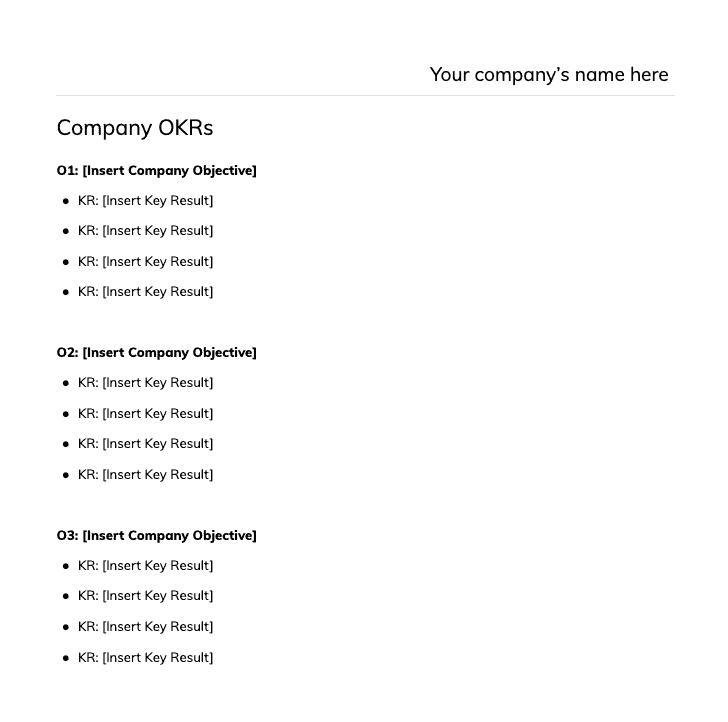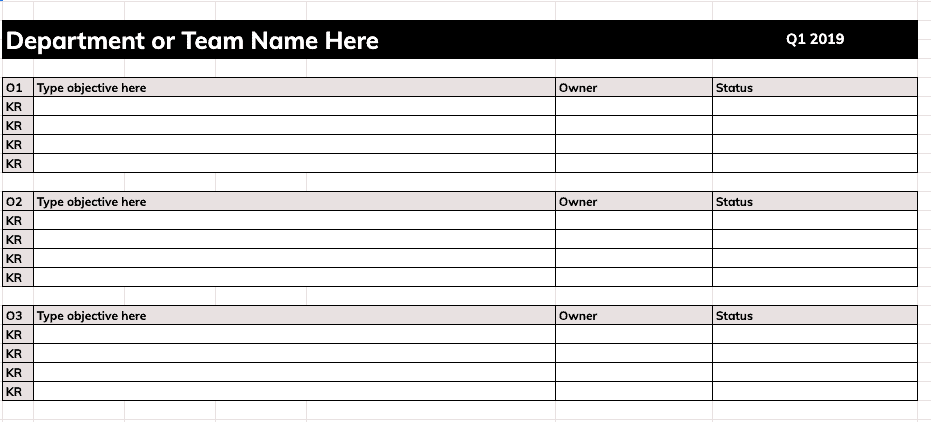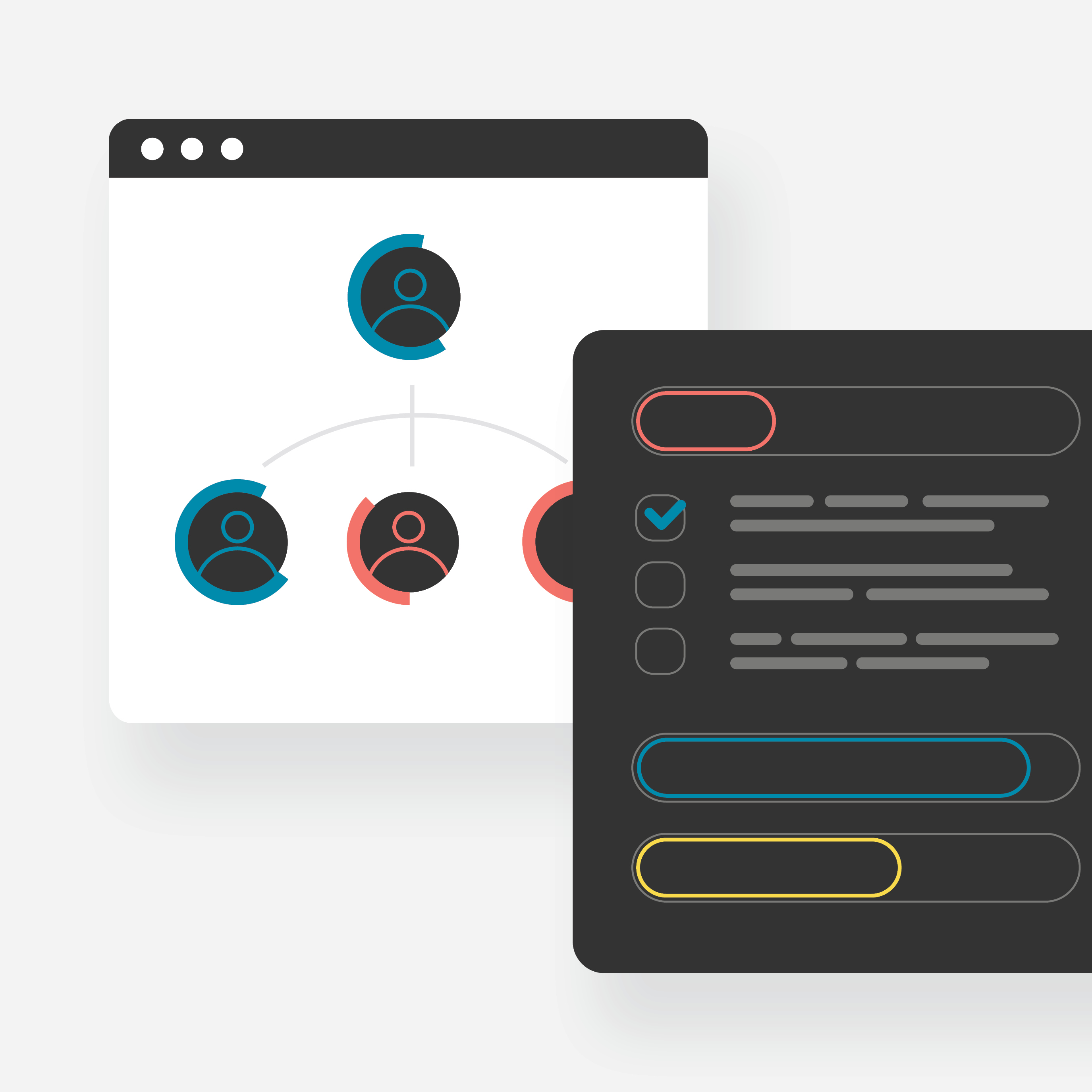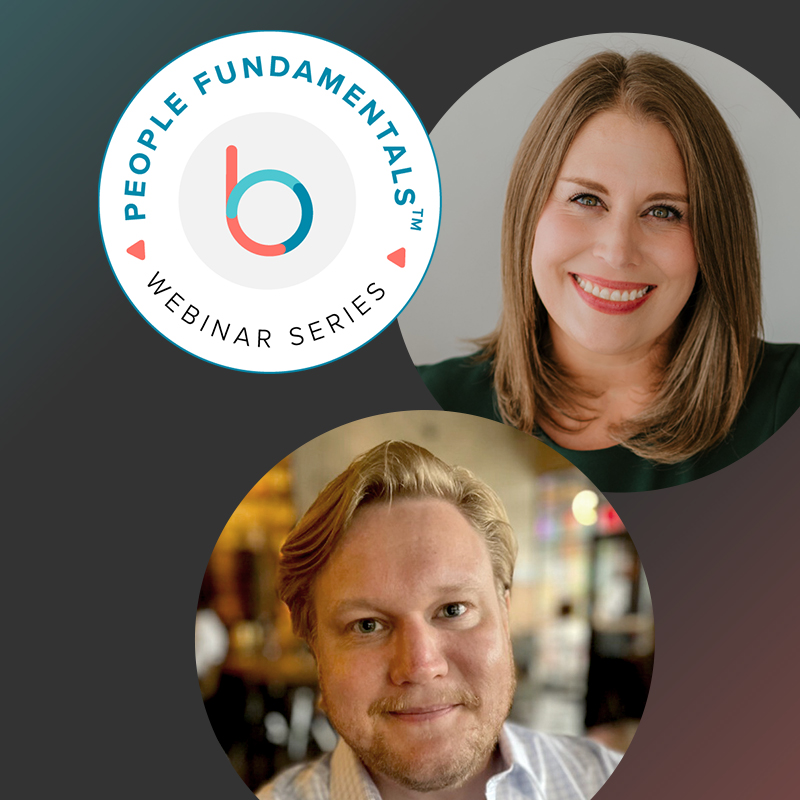The ‘world of work’ invariably looks different today, regardless of industry. Most businesses are operating in a virtual environment and anticipating a move to a hybrid workplace model when it’s deemed safe. HR leaders and C-suite executives are focusing on how to systematize and scale alignment, communication, and engagement. They’re looking for the best tools and techniques that drive execution and productivity regardless of whether their employees are at home, at the office, or both.
Luckily, the goal-setting methodology, Objectives and Key Results (OKRs), exists. OKRs are designed to reach every level of an organization in any context (hybrid or not). They’re proven to align employees with an organization’s top priorities, help managers support their teams, and uncover critical workforce insights. Here are some of our best practices for implementing and writing goals within this context as well as OKR templates to make it even easier to get started.
What are OKRs?
As mentioned above, OKRs are a collaborative goal-setting tool used by teams and individual contributors to set challenging, ambitious goals. What makes OKRs different, and more powerful, is that the goals are designed to be measurable. In other words, OKRs allow you to track progress, create alignment, and encourage engagement all while tethered to measurable outcomes. OKRs apply to any type of company and to any role within an organization. They’re so versatile they can be used at the company-, team-, and individual-level.
To break it down further, an Objective is what you’d like to achieve. An objective is concrete, action-oriented, and inspirational. A Key Result is a benchmark that guides how we accomplish the objective. Key results are measurable, verifiable, and are rooted in reality. They don’t offer room to mince words—you either meet a key result or you don’t. OKRs are time-bound (typically to a standard business quarter). They’re set, but then routinely check-in on with flexibility to pivot or amend as environments change or new problems take priority.
Benefits of setting and documenting OKRs
One of the most substantial benefits of implementing OKRs into an organization is that they align employee motivation to organizational performance. Leadership sets high-level goals, managers and teams translate those into workable goals for themselves, achieving cohesion and nurturing a shared sense of purpose.
The OKR system is also scalable. Companies large to small or growing can adopt the OKR methodology. The system is flexible and translates incredibly well to remote or hybrid workforces—particularly if the organization is using a platform like Betterworks that collects, communicates, and measures OKR progress in real-time.
OKRs play a helpful role for managers as well. Managers are tasked with motivating their teams, understanding their struggles, and showing up for crucial conversations. On top of performing their core job, they’ve got alignment, feedback, development, and recognition to keep in mind. Setting strategic OKRs with a team gives managers a roadmap and a cadence to address those concerns that were before handled impulsive or ad hoc.
What makes a strong OKR?
Now that you understand the general benefits of OKRs, how do you write them? What do clear, actionable, and aspirational goals look like? And, how do OKRs vary by department, role, or function?
OKR writing may seem daunting. Keep in mind that not only are OKRs primed to be revisited and adjusted, once you begin to use them and understand how they’re measured, writing them will get easier and easier.
When writing an Objective, think about the most valuable focus of the next quarter (or with whatever timeframe you decide). Less is more in terms of OKRs, and we’ve found that no more than 3 objectives are the sweet spot for teams to remember and work on.
Well-written Objectives are:
- Specific
- Measurable
- Achievable, but aspirational
- Relevant
- Time-bound
Each Objective should be tied to a Key Result. Key Results prove that you’ve either achieved your Objective or not. They are a measure of the work, not the actual work.
Key Results are:
- A measure of the work
- Demonstrate a result
What does an OKR template look like?
You can build an OKR template wherever you work or feel most comfortable. John Doerr, an OKR pioneer and author of the bestselling book “Measure What Matters” built an OKR Excel template you can download and use.
The basic requirements on an OKR template include:
- Owner. The individual, team, or company owning these specific OKRs
- Time-frame. The agreed upon time the OKRs are written fo (e.g. Q2 2021)
- Objectives. 1 – 3 clearly written Objectives
- Key Results. 2-4 plainly written and measurable Key Results nested beneath each Objective

Additional OKR template details:
- Ownership. The individual or team that is taking ownership of the each Objective
- Status update. A status report on the progress of each Objective

Sharing and updating your OKRs and OKR template
While creating your own OKR template is easy, you must set a cadence for revisiting the OKRs throughout the timeline you set. Biweekly check-ins with your team or with leadership is a great place to start. You can update progress together, ask key stakeholders about roadblocks and wins, and reassess if priorities have changed.
OKRs are a company-wide commitment. As such, they should be shared and accessible so all individual contributors can transparently understand top-level goals. Whether you use an Excel sheet or a Google doc, make sure everyone is aware it exists and that it’s open for reading and questioning.
Betterworks bakes in cadence, updates, and universal sharing of OKRs directly into our platform. We treat OKRs for what they are: living goals that require transparency and accountability. Our platform allows leaders, managers, and individual contributors to seamlessly integrate OKRs into their daily work routines resulting in alignment, engagement, and connection to a higher purpose.
More OKR template examples by industry
If you’re looking for written out examples of how OKRs read, here are some OKR examples in the Fintech and Biotech industries:
Fintech OKR examples
OBJECTIVE:
Close new round of capital
KEY RESULTS:
- Reach out to 10 VCs and funds and land in 6 meetings
- Convert 3 meetings from initial to near closing-meetings
- Close an investment round of $X
OBJECTIVE:
Improve company-wide budget transparency
KEY RESULTS:
- Reduce rejected expense reports by 10%
- Hold quarterly All Hands meeting dedicated to financial understanding
OBJECTIVE:
Enhance our data security
KEY RESULTS:
- Reduce red flag security issues by 20%
- Grow our security-related customer satisfaction survey results by 7%
Biotechnology OKR examples
OBJECTIVE:
Receive FDA approval for consumer testing
KEY RESULTS:
- Submit all necessary paperwork by x date
- Identify and consult with 3 bio-tech specific lawyers
OBJECTIVE:
Expand our marketing reach
- Deploy 4 new marketing campaigns targeted at 4 different customer segments
- Drive conversion of second-tier customer base by 16%
Getting started with OKRs may seem like a big task, but achieving alignment, engagement, and clarity on execution of priorities leads to significantly better business results. Learn more about how the Betterworks solution brings OKRs to life within organizations.




